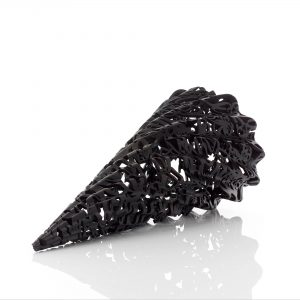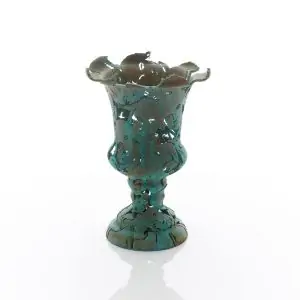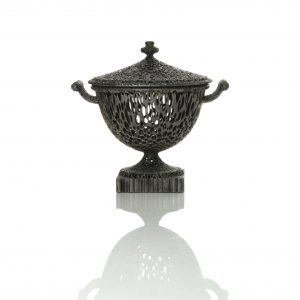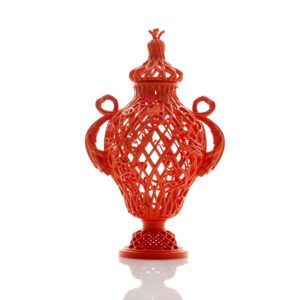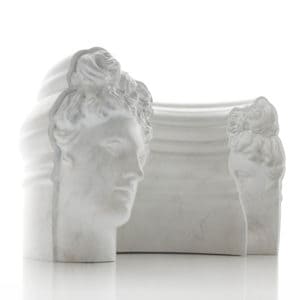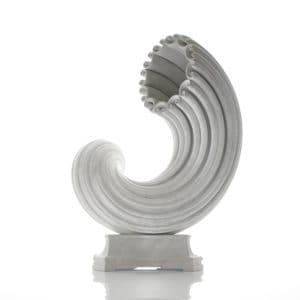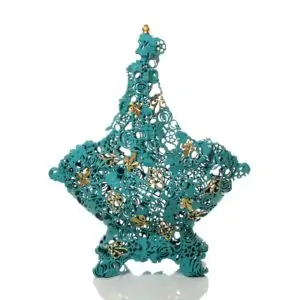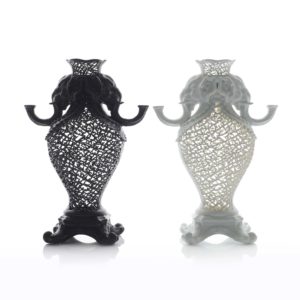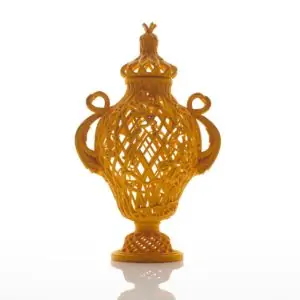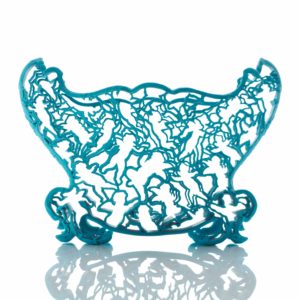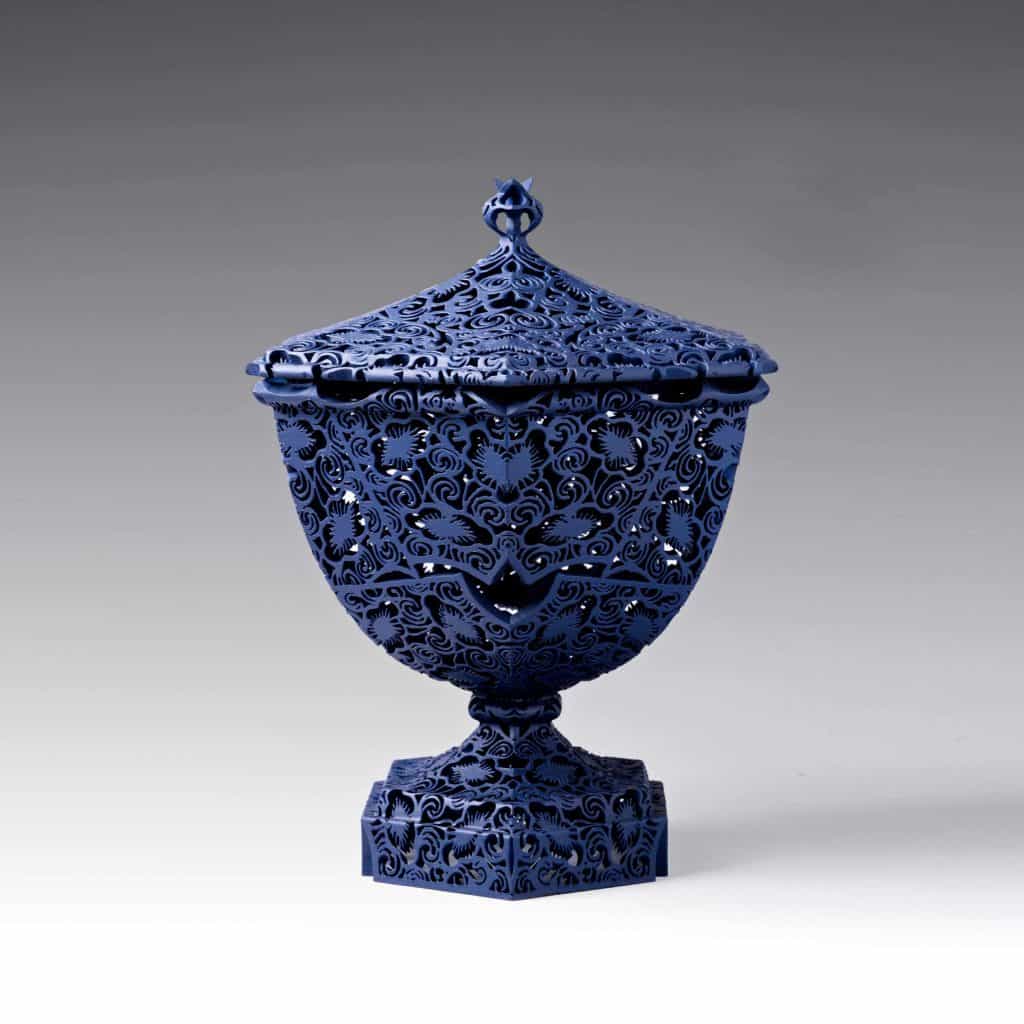
More about Imari I, 2014
'Imari is the European name for Japanese porcelain wares made in the town of Arita and exported from the port of Imari in Western Japan between the second half of the 17th century and the first half of the 18th century. Typical Imari is decorated with cobalt blue underglaze with red and gold onglaze. Made only for export to the West, it was often imitated by Chinese and European potters. The example I used as a starting point for my Imari pieces is an early 19th century Davenport cup and saucer, which appealed to me both as an attractive object and as an example of the way in which fashion, styles, materials and processes have travelled the world. My pieces are an attempt to extend the journey of the Imari story, in this case by converting the 2-dimensional surface pattern into a 3-dimensional object, using contemporary digital technology. Images of the Imari pattern were simplified to line drawings in Photoshop, and then imported into the CAD software that I use to create these pieces. The line drawing was then reproduced and joined together to make a repeating pattern. This was then ‘projected’ onto the surface of the tureen form that I had previously created. The drawings were then extruded through the surface of the tureen and used to cut through the solid surface, leaving a pierced form. Once the piece was scaled and carefully inspected it could finally be 3D printed and given a decorative surface treatment.' - Michael Eden

